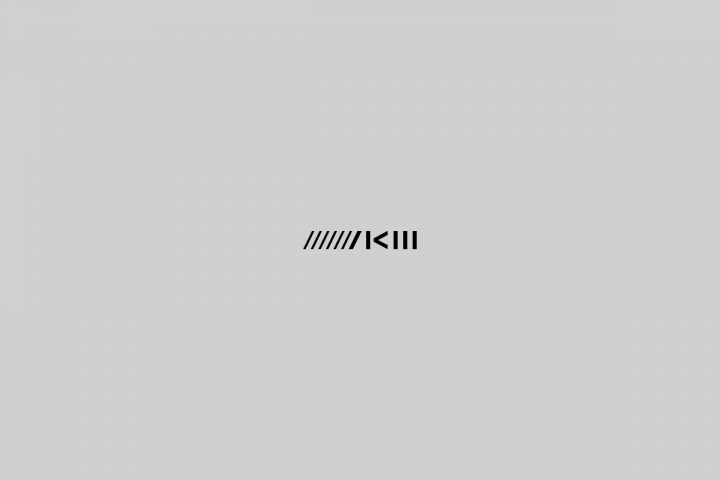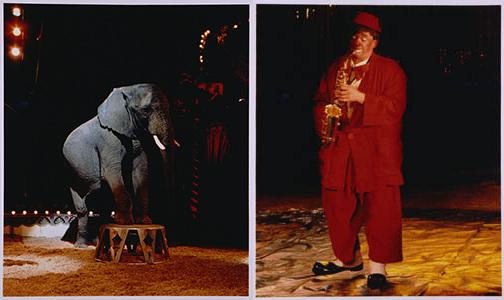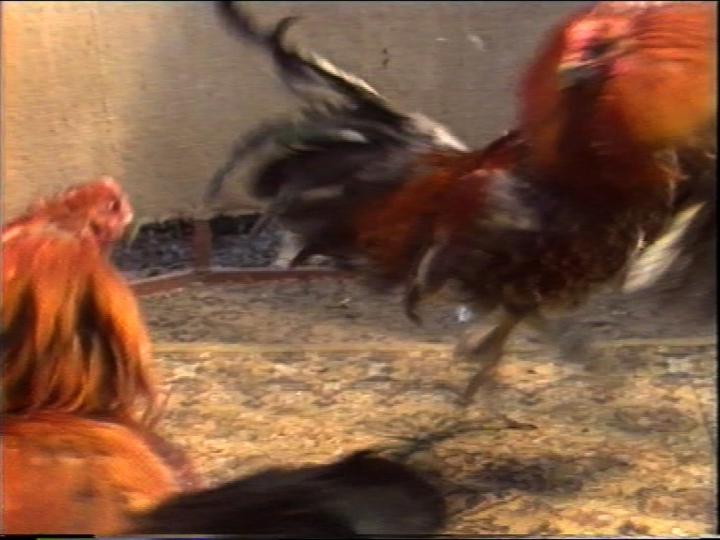Marie-Jo Lafontaine
Les larmes d'acier
1987
![Marie-Jo Lafontaine, »Les larmes d'acier« [Tears of Steel], 1987, six-channel video, two-channel audio installation ; 27 monitors, 6 laserdiscs, 6 laserdisc player, wood construction, 380 x 753 x 210 cm; video: 00:08:00, ZKM | Center for Art and Media Kar / © VG Bild-Kunst, Bonn ; photo © ZKM | Center for Art and Media Karlsruhe Werk - Les larmes d'acier](https://zkm.de/sites/default/files/styles/r17_720_dynamic/public/bild/ZKM000020937.jpg?itok=18Vo-ZFS)
- Artist / Artist group
- Marie-Jo Lafontaine
- Title
- Les larmes d'acier
- Year
- 1987
- Edition / Serial number
- 2
- Category
- video, installation, Video installation
- Material / Technique
- six-channel video, two-channel audio installation ; 27 monitors, 6 laserdiscs, 6 laserdisc player, wood construction
- Dimensions / Duration
- 380 x 753 x 210 cm; video: 00:08:00
- Collection
- ZKM | Center for Art and Media Karlsruhe
- Description
It is precisely in this tension between the unyielding formal rigour of the masculine attitude and the emotional unleashing of the mental horizon by the feminine part that the game of seduction unfolds, which Marie-Jo Lafontaine makes tangible as an erotic and ideological theme. »Les larmes d'acier« occupies a key position in Marie-Jo Lafontaine's oeuvre by projecting a complex constellation of concepts onto a representative plot in a paradigmatic manner: Under the dictate of beauty, man, machine, power and sexuality mutate into a totalitarian model. The music contributes decisively to this, both as an ironic subversion of the empty pathos and in its complicity with the overall staging. Apollo confuses himself with Dionysus, Narcissus rises to become the superman.
The German bombs that fell on Europe during the Second World War were called "tears of steel". And yet, against the background of this title, the work is not to be read as a political manifesto, even if the historical-political reference is intended. Marie-Jo Lafontaine risks touching on the stigmatised ideal of heroic strength and beauty by including the escalation of fascination in terror. The pose of superiority is subject to the ideology it has created itself. It is precisely here that the power of music allows the ideologised hubris to congeal into an empty pose, where it does not confront it by overpowering it, but ironises it by vicariously mirroring it. Considering the seemingly sacral, monumental architecture of »Les larmes d'acier« in relation to the video images, the installation can also be read as a commentary on the idea of the Gesamtkunstwerk. Embedded in a construction supported by gigantic buttresses, the arrangement of the monitors quotes the triptych-like form of an altar, in whose construction monumentality and media monism are problematised. The reference to Gothic cathedrals and Expressionist film architecture stands for the helplessly grandiose attempt to justify an isolated, autonomously asserting cultural claim through ideologised 'beauty', in which nature and art are misused to reconstruct great ideals. Marie-Jo Lafontaine makes clear that the attempt at absolute perfection is increasingly violent due to its inherent tendency to exclude the deviant, and that the passionate exaltation of ideal proportions ultimately degrades man to a manipulable mass. Her counter-draft to the "Gesamtkunstwerk" visualises how barbarism began with the haughty independence of beauty.
[First published in: Heinrich Klotz (ed.), Contemporary Art, Prestel, Munich, 1997]
![Marie-Jo Lafontaine, »Les larmes d'acier« [Tears of Steel], 1987, six-channel video, two-channel audio installation ; 27 monitors, 6 laserdiscs, 6 laserdisc player, wood construction, 380 x 753 x 210 cm; video: 00:08:00, ZKM | Center for Art and Media Kar / © VG Bild-Kunst, Bonn ; photo © ZKM | Center for Art and Media Karlsruhe Werk - Les larmes d'acier](https://zkm.de/sites/default/files/styles/r17_1280/public/bild/ZKM000020937.jpg?itok=OzIO3vE7)
![Marie-Jo Lafontaine, »Les larmes d'acier« [Tears of Steel], 1987, six-channel video, two-channel audio installation ; 27 monitors, 6 laserdiscs, 6 laserdisc player, wood construction, 380 x 753 x 210 cm; video: 00:08:00, ZKM | Center for Art and Media Kar / © VG Bild-Kunst, Bonn Werk - Les larmes d'acier](https://zkm.de/sites/default/files/styles/r17_720/public/bild/ZKM000020938.jpg?itok=Kmc8uX5T)
![Marie-Jo Lafontaine, »Les larmes d'acier« [Tears of Steel], 1987, six-channel video, two-channel audio installation ; 27 monitors, 6 laserdiscs, 6 laserdisc player, wood construction, 380 x 753 x 210 cm; video: 00:08:00, ZKM | Center for Art and Media Kar / © VG Bild-Kunst, Bonn Werk - Les larmes d'acier](https://zkm.de/sites/default/files/styles/r17_720_dynamic/public/bild/ZKM000020938.jpg?itok=8r0yycmm)
![Marie-Jo Lafontaine, »Die Angst« [The Angst], 1988, b/w photograph, oil on wood, bronze label, 240 x 112 cm, ZKM | Center for Art and Media Karlsruhe. / © VG Bild-Kunst, Bonn Werk - Die Angst](https://zkm.de/sites/default/files/styles/r17_720_dynamic/public/bild/ZKM000020939.jpg?itok=RZfLpeZv)

![Marie-Jo Lafontaine, »Die Sizilianische Eröffnung« [The Sicilian Gambit], 1986 - 1992, three-channel video, four-channel audio installation ; 14 monitors, 3 video tapes, 3 videotape recorders, 6 wooden plinths, 6 steel cabinets, Installation dimensions va / © VG Bild-Kunst, Bonn ; photo © ZKM | Center for Art and Media Karlsruhe, photo: Steffen Harms Werk - Die Sizilianische Eröffnung](https://zkm.de/sites/default/files/styles/r17_720_dynamic/public/bild/ZKM000020936.jpg?itok=IPKjfpJO)

